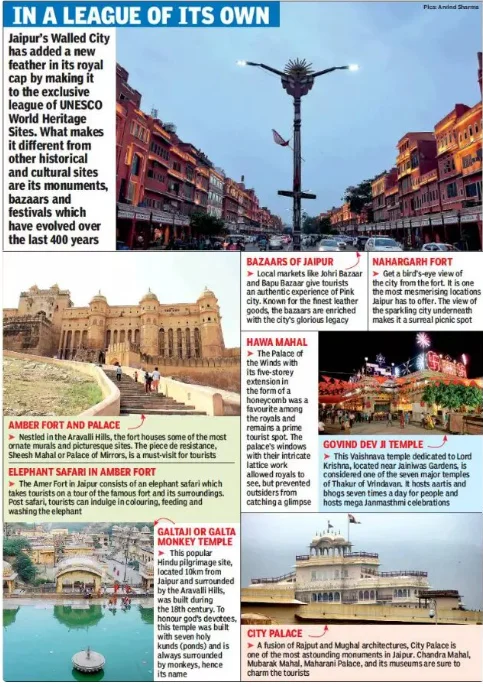Rajasthan
Jaipur’s Walled City
- 28 Nov 2025
- 2 min read
Why in News?
UNESCO has asked Rajasthan’s Department of Archaeology & Museums to submit a detailed status report on the conservation and management of the Jaipur Walled City, following concerns over urban pressures, unregulated construction.
Key Points
- The Jaipur Walled City was inscribed as a UNESCO World Heritage Site (2019) for being an exceptional example of 18th-century planned urban architecture.
- Founded in 1727 by Maharaja Sawai Jai Singh II, it is based on Vedic principles and a gridiron plan with broad streets, chowkris, and uniform bazaars. Unlike other cities in the region located in hilly terrain, Jaipur was established on the plain.
- It is known for its living culture, crafts, gemstone trade, handlooms, and vibrant bazaar ecosystem.Key features include City Palace, Hawa Mahal, Govind Dev Ji Temple, Jantar Mantar, traditional pink façades, city gates, and interconnected markets.
- It is managed under frameworks like the Conservation Management Plan (CMP), Integrated Management Plan, and State-level Heritage Regulations governing façade control, building height, colour uniformity, and signage norms.
- Threats include urban congestion, encroachments, structural strain, unregulated commercialisation, and loss of traditional architectural character.







